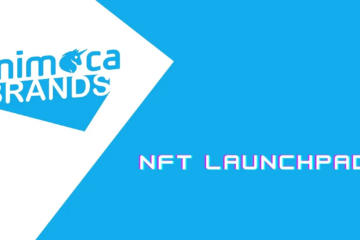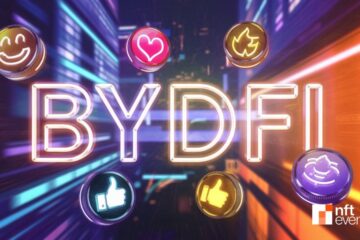Meme coins are a specific category of cryptocurrencies that draw inspiration from internet jokes, memes, and pop culture references. In contrast to Bitcoin or Ethereum, most meme coins do not have any serious utility and are largely fueled by community enthusiasm and viral trends.
Yet, the meme coin market has expanded rapidly, reaching an astonishing market cap of $108 billion today. Popular examples like Dogecoin and Shiba Inu have proven that meme coins can turn simple ideas into major financial opportunities.
Follow this guide and we will take you through step by step how to create a meme coin, from choosing the right blockchain to designing the coin, creating the smart contracts, and launching it properly, all the way to learning about tokenomics, marketing strategies, and building the community for it to thrive in the super competitive crypto market.
How to Launch Your Own Meme Coin: Step-by-Step Guide
Launching a meme coin requires careful planning, technical skills, and strong community engagement. By following these 14 steps given below, you can create a unique and successful meme coin:
1. Start with a Vision
The first step is to have a clear vision when making a meme coin. There should be a clearly defined purpose or goal for this meme coin, like whether it shall be playful community-driven, or a bit more specific for utility.
For example, Dogecoin began as a joke but became popular because of its community, while Shiba Inu aimed to rival Dogecoin with its unique ecosystem. Your vision should also include a theme that is catchy, relatable, and stands out from other best meme coins.
Also, define clear goals for your project. Decide whether your focus will be on creating a strong community, raising funds for a cause, or providing some real-world value. Writing down your ideas can help keep your vision focused and organized.
2. Choose a Blockchain
The blockchain you choose will determine how your meme token operates, including its transaction speed, costs, and scalability. Popular blockchains for meme coins include Ethereum, Binance Smart Chain (BSC), Solana, and Polygon.
Ethereum is widely used but has high transaction fees, while Solana offers lower fees and fast transactions, making it ideal for beginners.
BSC and Polygon are also great choices for their scalability and low costs. When choosing a blockchain, consider factors such as transaction fees, the size of the developer community, and whether the blockchain can handle many users simultaneously. Solana is a practical and affordable meme coin blockchain if you’re new to this.
3. Develop a Tokenomics Model
Tokenomics refers to the economic model of your meme coin. This includes deciding how many coins will exist, how they will be distributed, and what incentives you will offer to holders. Start by defining the total supply of your coin.
You should also decide how the tokens will be allocated. A common strategy is to allocate a percentage to marketing (10-20%), development (10-20%), community rewards (20%), and pre-sale or airdrops (50%). Another important aspect is whether you will include a burn mechanism to reduce supply and increase scarcity. A fair and well-thought-out tokenomics model can attract more investors and users.
4. Create a Website and Whitepaper
A professional website and a detailed whitepaper are essential for gaining trust and credibility. Your website should clearly explain your meme coin’s purpose, goals, and features.
Note: Include sections like a homepage, an “About” page introducing your team and vision, a roadmap showing your future plans, and a tokenomics page explaining your coin’s supply and distribution. Also, provide contact information and links to your social media channels.
The whitepaper should be a detailed document covering your project’s concept, tokenomics, use cases, and roadmap. It’s important to present your whitepaper clearly and transparently so investors can understand your project.
5. Design the Meme Coin
This is where the technical part begins. Designing the coin involves creating a smart contract, which defines the rules and functionalities of your meme coin.
You can use blockchain-specific programming languages like Solidity for Ethereum and BSC or Rust for Solana. The smart contract should include features such as transferring coins, setting supply limits, and enabling a burn mechanism if needed.
If you’re not experienced in coding, you can hire a skilled blockchain developer or use user-friendly tools like Remix for Ethereum and BSC. After coding, test the smart contract on a testnet to ensure it works correctly.
Note: You can also use Pump.fun (it’s a meme coin generator) for automatically creating and launching your Solana meme coins.
6. Audit Smart Contracts
An audit identifies vulnerabilities and fixes them before launch, protecting your coin from hacks or exploits. Many investors also look for audit results before trusting a new coin. Popular companies offering smart contract audits include:
- CertiK: Trusted by major projects like PancakeSwap.
- Hacken: Affordable for small projects.
Publish the audit results publicly to build trust with your community.
7. Set up the Wallet
A cryptocurrency wallet is essential for storing and managing your meme coin. You can use popular wallets like MetaMask or Trust Wallet.
Also, you should make sure your coin is compatible with these wallets by providing details such as the token symbol and contract address. Additionally, guide your users on how to set up wallets and add your coins. This makes it easier for them to buy, store, and use your meme coin.
8. Test and Audit Everything
Before launching your coin, thoroughly test all aspects of your project. Test the smart contract to ensure there are no bugs or errors. Verify that the wallet integration works seamlessly and that your website is fully functional with no broken links.
Also, test your token distribution process to confirm that pre-sales, airdrops, and rewards systems work as intended. Use blockchain testnets to simulate real-world scenarios and fix any issues that arise during testing.
9. Check for Compliance
Understanding and following cryptocurrency regulations is essential to avoid legal troubles. Different countries have different rules regarding cryptocurrencies. Key areas to consider include anti-money laundering (AML) regulations, securities laws, and tax compliance.
For example, in the U.S., meme coins must comply with SEC rules to avoid being classified as securities. It is highly recommended to consult with a crypto lawyer to ensure your project adheres to all legal requirements.
10. Develop a Marketing Strategy
Marketing plays a huge role in the success of your meme coin. Without proper marketing, no one will know about your project. Use social media platforms like Twitter (X), Reddit, Telegram, and Discord to promote your coin.
Create fun and engaging memes that align with your theme to go viral. Airdrops are another effective strategy, where you give free coins to early supporters to create buzz. Partnering with crypto influencers can also help reach a larger audience.
For example, Shiba Inu successfully used airdrops to distribute tokens and build hype, while Dogecoin’s “to the moon” slogan captured global attention. Focus on creating a unique identity and building a loyal community.
11. Launch Meme Coin
Once everything is ready, it’s time to launch your meme coin. You can choose between a fair launch, where everyone can buy the coin at the same price, or a pre-sale launch, where you sell a portion of the coins before the official release.
Announce the launch date in advance to build anticipation and excitement. Ensure all systems are fully functional on launch day.
12. List the Coin on Crypto Exchanges
Listing your meme coin on crypto exchanges increases its visibility and accessibility. Start with decentralized exchanges (DEX) like PancakeSwap, Raydium, Jupiter, or Uniswap, which are easier to list on.
Once your coin gains traction, apply to centralized exchanges (CEX) like Binance, Bybit, MEXC, or Coinbase. Be prepared to meet their requirements and pay listing fees. Listing your meme coin on reputable cryptocurrency exchanges can significantly boost your coin’s trading volume and credibility.
13. Take Care of Community Building
A strong and active community is the backbone of any successful meme coin. Engage with your community through social media, forums, and live AMA (Ask Me Anything) sessions.
Run contests and giveaways to keep users involved and excited. Encourage discussions and feedback to create a sense of belonging. Transparency is key; keep your community informed about the project’s progress and future plans.
14. Issue Regular Updates
Regular updates keep your project alive and maintain community interest. Share progress on roadmap goals, launch new features like staking or rewards, and announce partnerships with other projects.
For example, Dogecoin developers continuously release updates to improve transaction speed and reduce fees. Stay active on social media, respond to feedback, and show your commitment to the project’s growth.
How to Earn Profits With A Meme Coin?
- Invest Early in Promising Coins: Investing in a meme coin early can earn returns when it goes viral. Early investors reap the maximum benefit as demand increases and prices increase. However, research beforehand. You can also invest during the initial coin offering. Only invest in coins with a robust community and confirmed plans.
- Hold for Long-Term Growth: Some meme coins grow slowly over time, even with price ups and downs. Holding onto them patiently can pay off if they become widely used. Coins like Dogecoin have shown how long-term investors can gain big rewards when the market turns in their favor.
- Earn Through Staking or Farming: Many meme coins let you earn passive income through staking or yield farming. In this, locking your coins allows you to get extra tokens as rewards.
- Trade on Trend: Meme coins are prone to rapid price movements. One can buy at lower prices and sell when prices rise to earn quick money. Use market tools to track trends, but be cautious as this strategy requires fast decisions and has some sort of risk.
- Free Token Airdrops: The project can give away tokens, free of cost, through the airdrops as part of their marketing plan. Joining programs early can give you free tokens, which will later be sold for profit. Follow updates on new projects and catch these chances.
Key Technologies Behind Meme Coins
Blockchain Technology: The development of meme coins is based on blockchain networks like Ethereum, BNB Smart Chain (BSC), or Solana. Blockchain offers a transparent, decentralized, and secure mode of recording all transactions on an immutable ledger. It provides a basis for developing and running meme coins while supporting peer-to-peer transfers without middlemen.
Consensus Mechanisms: Consensus mechanisms such as Proof of Work (PoW) or Proof of Stake (PoS) will validate transactions, and ensure network security. These mechanisms verify that transactions made on meme coins cannot be reversed.
Token Standards: Meme coins are standardized under the token standard of ERC-20 (Ethereum) or BEP-20 (BSC) and define the rules for how tokens are minted and how they interact with decentralized applications. The standards facilitate interoperability across the ecosystem so that meme coins easily be stored in wallets, exchanges, and other blockchain tools.
Decentralized Finance (DeFi) Protocols: DeFi protocols enable meme coins to participate in staking, yield farming, and lending. For instance, meme coins like Shiba Inu use platforms like ShibaSwap to offer decentralized exchange services and staking rewards.
Liquidity Pool Mechanisms: Liquidity pools on decentralized exchanges (DEXs) like PancakeSwap or Uniswap facilitate trading by allowing users to swap meme coins with minimal slippage. These pools rely on automated market makers (AMMs) and require users to contribute tokens, earning rewards in return. And, hence they are very important for providing liquidity to new meme coins.
Decentralized Autonomous Organizations (DAOs): Some meme coins utilize DAOs to give their communities governance rights. The holders vote on proposals about development, partnerships, or funds allocation. Such a democratic approach increases transparency and trust, thereby encouraging long-term engagement.
Risks Associated With Meme Coins
- High Volatility: Meme coins are very volatile. Prices can explode one day, only to crash the next. This makes them dangerous for investors looking for a stable way to keep their money safe. You may lose most of the cash if you buy it at the wrong time.
- No Real Utility: Many meme coins don’t have real utility apart from hype and speculation. Therefore, without practical use, its value depends purely on market sentiment and popularity. When interest diminishes, so does the coin’s value.
- Scams and Rug Pulls: The world of meme coins is replete with scams. A developer might abandon a project, leaving with all the investor’s money. That’s called a “rug pull”. So, always look up the team and project before investing.
- Regulatory Risks: Governments are still learning how to control cryptocurrencies. Changing laws can drastically limit trading, and in the worst-case scenario, some meme coins may become illegal overnight. The uncertainty is what adds to the risks of investment.
- Over-Reliance on Community Hype: Meme coins are highly dependent on online communities and viral trends. If the hype dies down or the community loses interest, the coin’s value can plummet. Popularity is hard to predict and even harder to maintain.
Conclusion
In a nutshell, creating meme coins is exciting and rewarding if you do it right. You begin with a great idea, choosing the right blockchain, and designing your coin. Then comes the tokenomics planning, community building, and smart marketing for its success. Of course, since meme coins depend more on hype and trends, actual value and project transparency can really make a difference.
With this guide, you now have the steps and knowledge to launch your own meme coin. Always remember to stay creative, plan well, and follow all legal rules to avoid problems.
FAQs
Is it illegal to create a meme coin?
No, creating a meme coin is not illegal in most countries, but it depends on how you approach it and the laws in your region. Cryptocurrencies, including meme coins, must comply with local regulations such as anti-money laundering (AML) laws and securities regulations.
If you market your coin as an investment or promise you will get returns assured, then you’re going to need some additional legal approvals. Failure to follow the legal requirements or misleading investors can lead to penalties.
How much does it cost to create a meme coin?
Creating a meme coin would cost depending on its complexity and the tools used. If you use blockchain platforms like Ethereum or BNB Smart Chain and are a programmer, you could easily spend between $500 to $1,000. Professional developers or meme coin creators can charge you anywhere from $5,000 to $20,000 or more.
Other costs will be designing a website, auditing a smart contract code, and marketing. If you’re looking to build a high-quality meme coin project with great branding and community building, then be prepared to spend a good amount of money.
Is creating a meme coin profitable?
Making a meme coin is very profitable if done correctly. Success depends on factors such as unique branding, a strong community, and strategic marketing. The market is highly competitive. Poorly planned coins can fail fast. You need a clear vision, well-thought-out tokenomics, and a long-term strategy to sustain interest.
Do I need programming skills to create a meme coin?
Having programming skills would make creating a meme coin a lot easier, but it’s not necessary in most cases. There are many tools and templates on platforms such as Pump.fun that enable users to create tokens without knowing advanced coding.
Also, One can hire professional developers who will create the smart contract and take care of the technical aspects. Still, knowledge of basic blockchain technology and token standards like ERC-20 or BEP-20 is required.
Is it necessary to have a community for a meme coin?
Yes, a strong community is required for the success of a meme coin. Meme coins rely much more on the community and the level of participation and engagement from it to hype up and maintain relevance compared to traditional cryptocurrencies. A community that is passionate and dedicated can be very helpful in spreading the word, creating memes, and creating demand for the coin.
Building and cultivating your community via social media, forums, and events is necessary. Without an engaged group of followers, your meme coin will likely fail to gain traction and maintain interest over the long haul.
 Bitcoin
Bitcoin  Ethereum
Ethereum  Tether
Tether  XRP
XRP  USDC
USDC  Wrapped SOL
Wrapped SOL  Lido Staked Ether
Lido Staked Ether  TRON
TRON  Dogecoin
Dogecoin  Cardano
Cardano  Figure Heloc
Figure Heloc  WhiteBIT Coin
WhiteBIT Coin  Wrapped stETH
Wrapped stETH  Bitcoin Cash
Bitcoin Cash  Wrapped Bitcoin
Wrapped Bitcoin  USDS
USDS  Chainlink
Chainlink  Wrapped eETH
Wrapped eETH  Binance Bridged USDT (BNB Smart Chain)
Binance Bridged USDT (BNB Smart Chain)  LEO Token
LEO Token  WETH
WETH  Hyperliquid
Hyperliquid  Stellar
Stellar  Monero
Monero  Zcash
Zcash  Coinbase Wrapped BTC
Coinbase Wrapped BTC  Ethena USDe
Ethena USDe  Litecoin
Litecoin  Sui
Sui  Avalanche
Avalanche  Hedera
Hedera  Shiba Inu
Shiba Inu  sUSDS
sUSDS  USDT0
USDT0  Dai
Dai  Mantle
Mantle  Toncoin
Toncoin  World Liberty Financial
World Liberty Financial  PayPal USD
PayPal USD  Cronos
Cronos  Ethena Staked USDe
Ethena Staked USDe  Uniswap
Uniswap  Polkadot
Polkadot  MemeCore
MemeCore  Aave
Aave  Bittensor
Bittensor  USD1
USD1  Canton
Canton 


